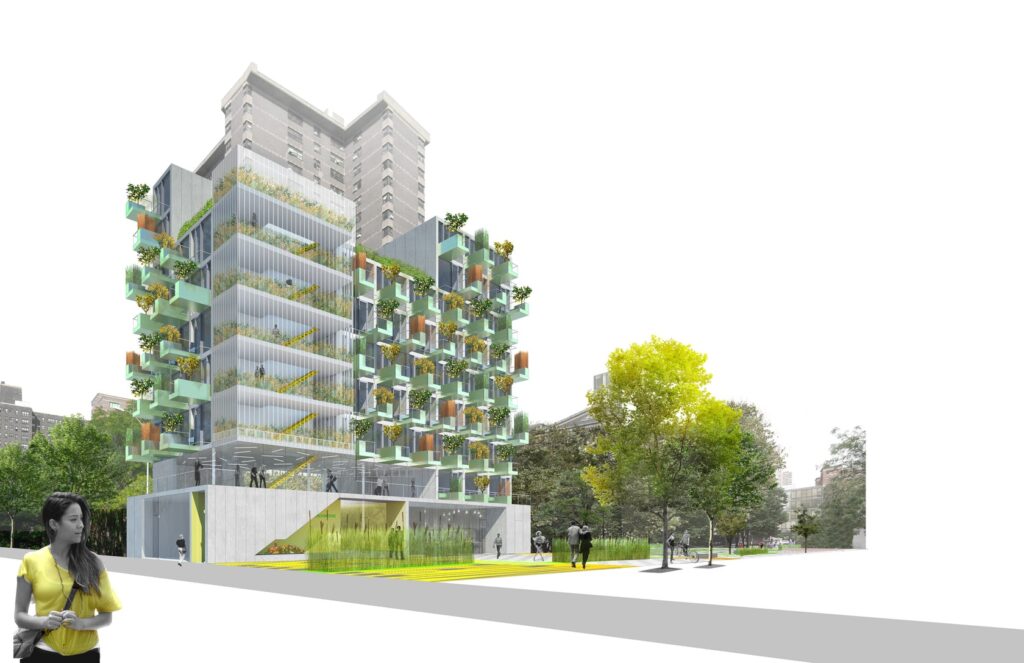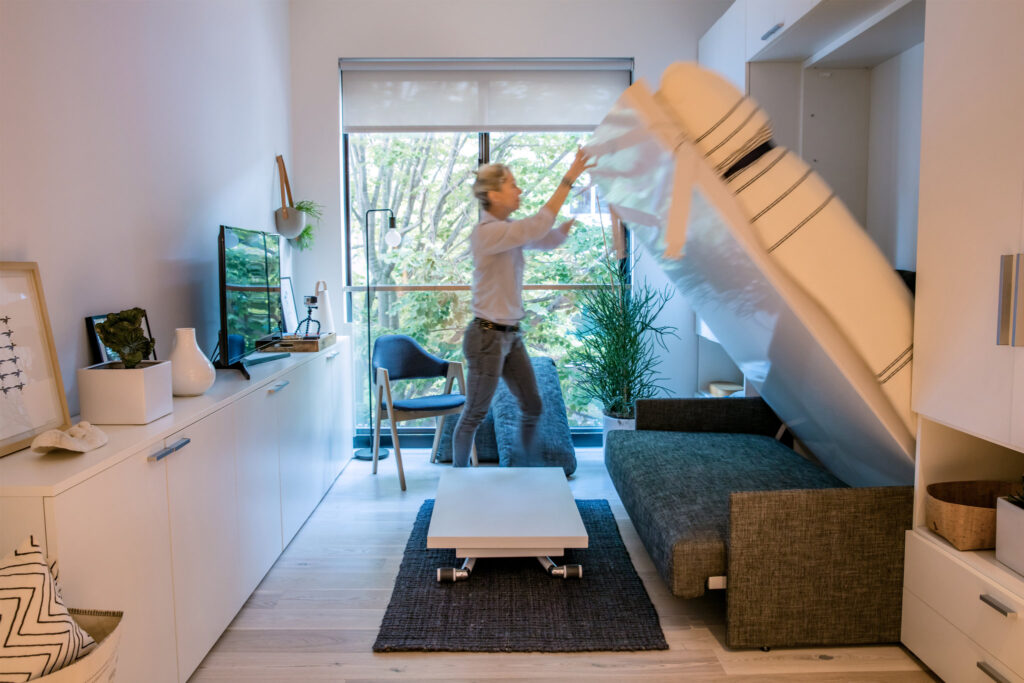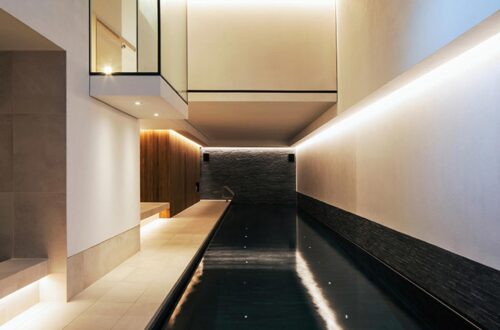
The Rise of Micro-apartments in Urban Spaces
In highly populated urban spaces, micro-housing has become a popular solution to people’s struggles of finding affordable housing. Usually ranging between 150 and 400 square feet in size, these tiny apartments are most common in crowded cities where rent prices are soaring, such as New York or Shanghai. In recent years, these tiny living spaces are increasing in popularity, especially for their affordability, low maintenance and convenient locations usually in the heart of a bustling city. Read on to discover all unique aspects of micro-apartments, their benefits and challenges as well as people’s opinions living in them…
What caused the rise in popularity of micro-apartments?
The sudden increase in popularity of these tiny living spaces wasn’t merely a response to the scarcity of space in densely populated urban centres; the rise of the gig economy, flexible work arrangements as well as the cultural shift towards a more sustainable lifestyle are all factors that need to be considered. We will look at each one in detail.

First of all, the rising popularity of micro-apartments can be attributed to their affordability amid the scarcity of living spaces in dense urban areas, where housing costs are continually on the rise. As property prices soar—especially for larger accommodations—micro-apartments offer an appealing alternative for individuals seeking to establish themselves in city centres. The reduced square footage not only leads to lower construction and maintenance costs but also allows for more efficient use of limited space, making these compact units more accessible to a diverse demographic, including young professionals, students, and those on tight budgets.
Beyond affordability and scarcity, the rise of remote labour as well as the gig economy are also crucial factors to consider in the face of micro-apartments’ popularity. As more individuals embrace flexible work arrangements, the demand for large, dedicated home office spaces is decreasing. Micro-apartments are crafted to maximise space efficiency, frequently featuring multifunctional furniture and clever storage solutions. This versatility makes them ideal for those who appreciate the convenience of working from home while avoiding the responsibility of maintaining an excess of space exclusively for office use.

Finally, micro-apartments are in harmony with the contemporary focus on sustainability and eco-friendly living. Their smaller footprint necessitates fewer resources for both construction and maintenance, thereby minimising environmental impact. Furthermore, the trend towards minimalist living inspires residents to adopt a more sustainable and mindful lifestyle by curbing the accumulation of material goods. This commitment to sustainability appeals to an expanding urban demographic that is increasingly aware of the ecological consequences of their living arrangements.
Trade-offs of micro-apartments
After reading this far, some of you might be wondering – is it really that good living in such a space where you can’t even stretch your legs at times? The answer is complicated and involves the concept of trade-offs.

Micro-apartments exemplify the economic concept of trade-offs, as they require residents to make conscious decisions regarding their living space and lifestyle. By opting for a smaller living area, individuals gain the benefits of reduced costs, lower utility bills, and a smaller environmental footprint. However, this choice often means sacrificing the luxury of ample space and an abundance of material possessions. Residents must carefully weigh these trade-offs, balancing the desire for convenience and affordability against the need for comfort and personal belongings. In this way, micro-apartments highlight the inherent economic principle that every choice involves a trade-off, prompting individuals to prioritise their values and adapt their lifestyles to fit within the constraints of limited space.
Case studies/ real-life experiences
Seattle, Washing State, USA
Every section of Barbara Peraza-Garcia’s family’s single-room apartment in Seattle serves double or even triple duty. The 180-square-foot (17-square-metre) space is furnished with an air mattress where she, her partner, and their children, aged 2 and 4, sleep. It also serves as their play area and TV room, transforming into a dining room at mealtimes. For this family of asylum seekers from Venezuela, the tight quarters are a necessary compromise.

However, at $900 a month — over $550 less than the average studio in Seattle — the micro-apartment, which features a basic bathroom and a shared kitchen, fits their budget and provides a much-needed escape from their previous situation of sleeping on a church floor.
“It’s warm. We can cook for ourselves. We have a private bathroom. It’s quiet,” Peraza-Garcia shared, noting that her family fled Venezuela to escape crime and for her to access essential medication for cysts on her kidney. “We can be here as a family now.”
Living in close proximity to their cousins and within walking distance of grocery stores, a park, and preschools makes the tight squeeze worthwhile for the Peraza-Garcia family. They intend to stay in the micro-apartment for the next year and hope to transition to a larger place once they secure better-paying jobs.
“We’re happy because we’re here in a quiet place where we can be together as a family,” she said.
New York City, USA
As a resident of one of New York City’s many micro-apartments, Alaina Randazzo—a small 5’5″ content creator—finds it impossible to lie flat on the floor of her Manhattan home without cramping her neck. Bathed in a soft pink glow from a neon sign that says “Girls Girls Girls,” her unit spans just 80 square feet, making it one of the smallest in the city.

She made the move to this space, which costs $650 a month, in January 2022, leaving a high-rise luxury building in order to allocate more funds toward travelling. “It’s completely a choice to move into an apartment like this,” the social media personality tells AD. “Plus, I’m saving a ton of money.” Inside, she has a compact kitchenette featuring a mini fridge, a two-burner stove, and a microwave, as well as a lofted bed area and a skylight. The small living area is furnished with a mini couch and table, and she enjoys a private bathroom down the hall, although she admits it’s not particularly luxurious.
“I’ve tried to decorate it, but I stick to taking showers at the gym I pay for, which is a really nice gym that I’m thankful to have the budget for because of living in a small apartment.”
However, micro-apartments are certainly not suited for everyone. Randazzo adds that it can occasionally be challenging to get dressed in the morning when she’s rushing out the door, and she would sometimes appreciate a bit more separation among her bedroom, kitchen, living room, and dining area. “Everything is just combined into one space,” she remarks.
Challenges
While micro-apartments offer numerous benefits that we discussed throughout this article, they also come with certain drawbacks. Key concerns associated with micro-living include limited space, building code restrictions, and potential health issues. However, innovative design solutions can help mitigate these challenges and enhance the overall experience of living in a small space.
Limited Space: One of the most significant downsides of micro-apartments is the restricted space available. This can be particularly challenging for those living with others, as the limited area might not be sufficient to comfortably accommodate everyone. The lack of privacy and the feeling of being cramped can negatively impact the quality of life and make it difficult to host guests. Additionally, children may not have enough room to play and engage in activities.
Building Codes: In some cities and localities, constructing micro-apartments may be restricted or prohibited by law, limiting the availability of such housing options in those areas. Certain building codes enforce a minimum size requirement for residential units, which can effectively rule out micro-apartments. However, as some cities begin to recognize micro-living as a potential solution to housing shortages, they are gradually adapting their regulations to accommodate these smaller living spaces.
Health Issues: Living in a small, confined space can potentially lead to both physical and psychological health problems, especially if multiple people are sharing the space. Micro-apartments can pose hazards such as an increased fire risk due to the close proximity of appliances and furniture. Additionally, living in a cramped environment can contribute to psychological stress, leading to anxiety or feelings of claustrophobia.
Sources
- Burgin, Audrieanna. “Navigating Trade-Offs: The Rise and Challenges of Micro-Apartments in Urban Housing Markets – Econ Everyday for Everyone.” Econ Everyday for Everyone, 16 Apr. 2024, econeveryday.com/navigating-trade-offs-the-rise-and-challenges-of-micro-apartments-in-urban-housing-markets/.
- Capitalivbellaire. “Living Small, Living Large: The Rise of Micro Apartments.” Medium, Medium, 13 June 2023, medium.com/@capitalivbellaire/living-small-living-large-the-rise-of-micro-apartments-bad21503f393.
- Golden, Hallie, and Clair Rush. “Micro-Apartments Are Back after Nearly a Century, as Need for Affordable Housing Soars.” AP News, 21 Mar. 2024, apnews.com/article/micro-apartments-affordable-housing-homelessness-716346460edde132dd3701f8eda74331.
- Heinemann, Lanyon. “JMK Contractor – Remodelling & Handyman Services.” Jmkcontractor.com, 26 Apr. 2023, jmkcontractor.com/micro-living-space-pros-cons/#:~:text=Micro%20Living%20Space%20Cons.
- Nast, Condé. “Micro Apartments Are the Best Thing to Happen to the Planet.” Architectural Digest, 11 Jan. 2023, www.architecturaldigest.com/story/micro-apartments-benefit.
- Yagnik, Manju. “The Rise of Micro-Apartments: Compact Living Redefines Urban Real Estate.” Epcworld.in, 17 Jan. 2024, www.epcworld.in/p/post/the-rise-of-micro-apartments-compact-living-redefines-urban-real-estate.




